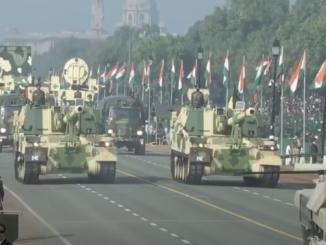
In his 1961 classic entitled ‘Deterrence and Defense’, Glenn H. Snyder, while terming deterrence a function of the total cost-gain expectations argued that, “the aggressor’s estimate of costs and gains is a “whole war” estimate, depending on his image of the deterrer’s entire sequence of moves up to the termination of the war…”In saying this, Snyder, known for introducing the Stability-Instability Paradox in the even-otherwise rich strategic literature, ably linked deterrence with the prospect of escalation. In other words, a potential aggressor is more than likely to take into account its own ability to retain escalation dominance, as well as the response of the adversary at each lung of the escalation ladder. The prospective aggressor will also keep the opponent’s capability and willingness to give an ultimate response in mind, before deciding upon a course of kinetic action. This, to a degree, lies at the heart of what McGeorge Bundy called “Existential Deterrence.” The debate on the utility of nuclear weapons in exacting deterrence and stability continues unabated. However, what is clear is that two nuclear dyads in the U.S.-USSR/Russia and Indo-Pak, have avoided a full-scale war under a nuclear overhang. While nuclear weapons ensured that the Cold War remained cold, they have also contributed towards pushing India and Pakistan to tailor how they use force against each other.
That said, the outbreak of many a crisis between India and Pakistan has, according to a vast group of scholars, put question marks on the stability-inducing effects of nuclear weapons in the South Asian theatre. This has made analyzing the role of nuclear deterrence in Indo-Pak crises all the more important. In his 2020 book entitled ‘Nuclear Weapons and Deterrence Stability in South Asia ‘, ace nuclear scholar, Devin T. Hagerty, looks at the state of deterrence stability in the region, by lucidly analysing as to what role nuclear deterrence had played in post-1998 Indo-Pak crises. After coming across, to a degree, as a sanguine nuclear revolutionary in his path-breaking 1998 book ‘The Consequences of Proliferation’, Hagerty, yet again, brings in nuclear deterrence as a factor of stability. That said, Hagerty’s characterization of stability is similar to Ashley Tellis’, as they both use the term “ugly stability” to describe it. For Hagerty, subconventional violence and simmering acrimony between the two rivals go on to constitute the ugly side of the equation , while nuclear deterrence’s propensity to dampen the prospects of escalation higher up the escalation ladder lends stability.
In a bid to bring in nuance to the discourse on escalation and the nature of stability, it is imperative that new, more dangerous routes of crisis onset be looked at. The author has, by and large, termed Pakistan as the agent provocateur. It is very much possible that another outrageous event, choreographed and authorized by an irrational, revanchist Indian leadership, leads to the next Indo-Pak crisis. Thus, step one could, for instance, be India’s attempt to carry-out a ground offensive in Azad Jammu and Kashmir (AJK), something that its leadership has vowed to do. The debate on crisis onset aside, Hagerty’s attribution of India’s calibrated use of force in crises between 1999 and 2016 to nuclear deterrence, among other factors, is correct. Hagerty rightly notes that, post-nuclearization, large-scale conventional operations were unfeasible. One only needs to compare India’s response to Pakistan’s Gibraltar and Grand Slam operations in 1965 with those to the incursions in Kargil, to understand this point. While India opened frontages in Lahore and Sialkot in 1965, it, out of fear of escalation till the nuclear level, chose to keep its retaliation limited to the same theatre of operations. Hagerty, echoing Snyder’s understanding of deterrence, writes: “It was not the fear of an immediate Pakistani nuclear reprisal that deterred New Delhi from sending its army across the LOC; it was, rather, Indian officials’ understanding that the war could escalate from there to the international border, and perhaps beyond, into the nuclear realm.” That India was not sure about retaining control on the course of escalation, let alone dominating it is something that makes the role of nuclear weapons conspicuous in the South Asian theatre. It is important to note that, prior to the overt nuclearization of the region, military victories were pursued and achieved by both countries. Across crises, as Hagerty’s research-laden book suggests, India’s options against Pakistan were limited due to the veritable fear of escalation with nuclear undertones.
Hagerty also looks at the constraints imposed on New Delhi’s freedom of action by Washington’s crisis diplomacy, India’s lack of conventional offensive power, and its so-called adherence to strategic restraint. Hagerty fittingly says that, absent nuclear deterrence, the other factors might not have held India back. He argues: “Framed another way, nuclear deterrence has been the cause which, if taken away, would have made the most difference. It is difficult to imagine that the Indian political leadership would, in the absence of nuclear weapons, have resisted pressures to order more punitive military strikes against Pakistan.” Hagerty’s argument is solid and grounded in a deeper understanding of India’s military aggression against Pakistan. In the pre-nuclear era, not only did India militarily invade East Pakistan in 1971 but also captured the 78-kilometer-long Siachen glacier in 1984.
Subsequently, Hagerty focuses on two things: the contours of deterrence stability in South Asia and ways through which it can be enhanced. Hagerty plots the Indo-Pak nuclear dyad on a continuum between pure stability and pure instability, by looking at a set of four factors: technological-material, doctrinal, organizational, and political. He contends that the Indo-Pak dyadic equation lies somewhere in the middle of the spectrum. Hagerty dissects the rising political temperatures between the two countries since the 2019 Pulwama-Balakot Crisis. He hits the nail on the head when he terms the festering Kashmir dispute as the source of future crises. He writes: “the Kashmir dispute continues to be the “bleeding wound” of Indo-Pakistani relations, with no end in sight. There remains a distinct possibility of future India-Pakistan crises.” However, rather than focus on India’s illegal annexation of Kashmir and the brutalities that go with it, the author regurgitates Pakistan’s alleged support to non-state actors. This line of thinking percolates in Hagerty’s hypothetical analysis of the ugly nature of stability, where Pakistan, one way or the other, is portrayed as the aggressor. Here, it is important to note that the milieu could become uglier if an Indian leadership, infested by religious zeal and grandiose designs, genuinely feels that changing the status quo is less risky in a nuclear environment. This phenomenon will all but effect a change in India’s doctrinal thinking, as evidenced by its proclivities to tinker with its even-otherwise diluted no-first-use policy.
As Hagerty rightly notes, countervalue doctrines add more to deterrence stability than those that rely on counterforce. The allure of military victories and escalation dominance could feed into India’s counterforce temptations going forward. This has been succinctly fleshed out by Rabia Akhtar. She writes: “A doctrine-driven push towards a counterforce strategy is visible in the Indian strategic conclave. With a doctrine that accommodates nuclear compellence and challenges the very essence of deterrence, it is only a matter of time before India acquires the full-spectrum of capabilities that make counterforce a possibility, however distinct or dangerous it might be.”
Hagerty’s exposition of the factors of stability is, to put it frankly, hardly up for debate. Both the empirical record and the logic of deterrence are strongly favouring Hagerty’s disquisitions. While being circumspect in giving a final call on the utility of nuclear deterrence in the Pulwama-Balakot Crisis, Hagerty does believe that the nuclear factor dictated New Delhi’s and Islamabad’s conventional operations. It is reasonable to argue that, for Pakistan’s Prime Minister Imran Khan, the perceived inability to control escalation and terminate a crisis in an advantageous position, was but a big concern, and rightly so. Hagerty stupendously helps readers understand what Bundy meant by Existential Deterrence. Hagerty rightly outlines that the concept is incomplete without mutual, survivable second-strike capabilities. It is logical to assert that if one of the sides in the dyad feels that the other cannot retaliate, deterrence may not save the day.
Along with Existential Deterrence, India’s and Pakistan’s nuclear doctrines add to stability in the region. Though Hagerty’s deference on Vipin Narang’s assessment of Pakistan’s nuclear doctrine is problematic, his broader point about its deterrent effect is reasonable. The concept of asymmetric escalation needs to be revised in light of the crisis behaviour of Pakistan in the Pulwama-Balakot Crisis. While Pakistan’s response was calibrated, it was India that was willing to change the domain and the intensity of its retaliation mix. That said, Hagerty is spot on in saying this: “Pakistan’s nuclear deterrent dictates that New Delhi consider only smaller, more limited conventional ground thrusts whose outcome would be profoundly uncertain.” Assiduously parsing Bundy’s and Narang’s intellectual contributions, Hagerty concludes that both doctrines induce caution and uncertainty, elements that are critical to deterrence.
Hagerty is alive to the tenuous nature of deterrence stability in the volatile South Asian region. He brilliantly encapsulates the Action-Reaction Syndrome that marks and mars Indo-Pak nuclear dynamics. Hagerty lays bare India’s multiple-audiences problem, and as to how that could force Pakistan to take countermeasures. Indeed, advanced technology and better, faster delivery vehicles, ostensibly meant for China, could be easily redirected towards Pakistan, increasing chances of misperceptions. In sum, Hagerty does not completely deny that deterrence could attenuate and even break. Therefore, he recommends a series of steps that the South Asian titans can take in a bid to reduce the ugly side of the spectrum.
Though Hagerty again puts the onus of subconventional instability on Pakistan, he does acknowledge that both sides need to stop their subconventional activities against each other. While Pakistan has not only depicted political will and commitment to fighting terrorism, it has also taken practical steps to that effect. India, on the other hand, has been found wanting. It has fomented trouble in Pakistan by bolstering Baloch separatists, the Tehreek-e-Taliban Pakistan, and other elements inimical to Pakistan. Yes, Hagerty is right in arguing that subconventional activities must end. This is simply because whatever happens at the subconventional level feeds into the conventional and nuclear levels.
As an astute South Asia watcher, Hagerty is on the money in looking askance at India’s Cold Start Doctrine. It is not only impractical but also dangerous and incendiary, especially given its gargantuan aims that run the risk of breaching Pakistan’s red lines. Hagerty’s other useful suggestions to augment deterrence stability cannot gain traction, unless both countries resolve the Kashmir issue. Hagerty is cognizant of this. He writes: “Enhanced deterrence stability will remain elusive until the two countries’ relationship is normalized.”
All in all, Hagerty’s book is a must-read for scholars and practitioners alike. While it accurately places nuclear deterrence as an inveterate stability-propellant in a hostile relationship, it also surveys some of the threats that could deride deterrence stability in South Asia. Though deterrence has continued to induce caution, it would be reasonable to expect that the very concept may increasingly appear to be a hindrance in the politics of war and escalation, pushing parties to look for options to shift from deterrence to compellence. The question that we all should cogitate on is this: Will nuclear deterrence continue to outlaw nuclear compellence? Hagerty convincingly and academically tells readers that, it indeed will.
![]()





Be the first to comment